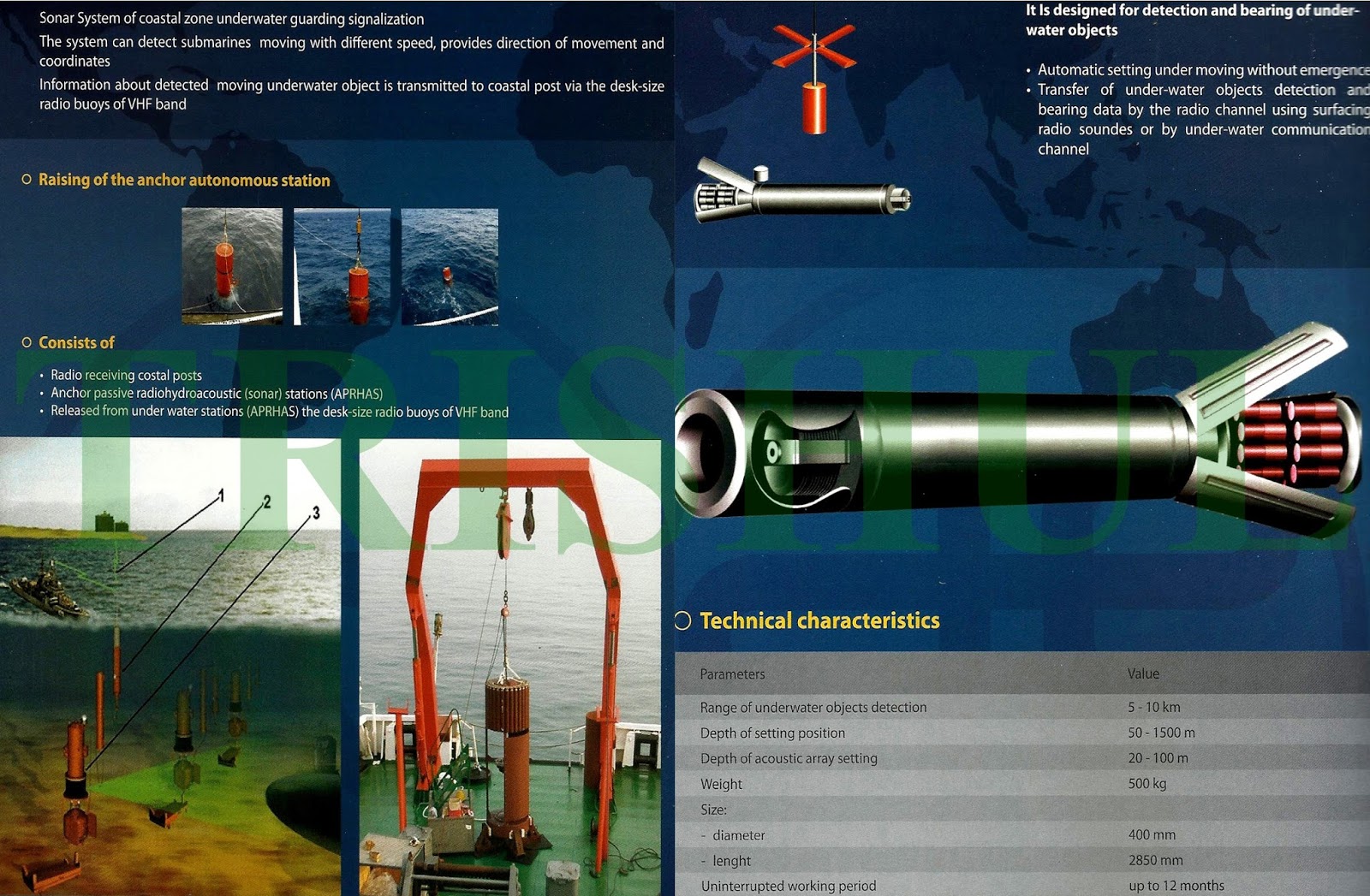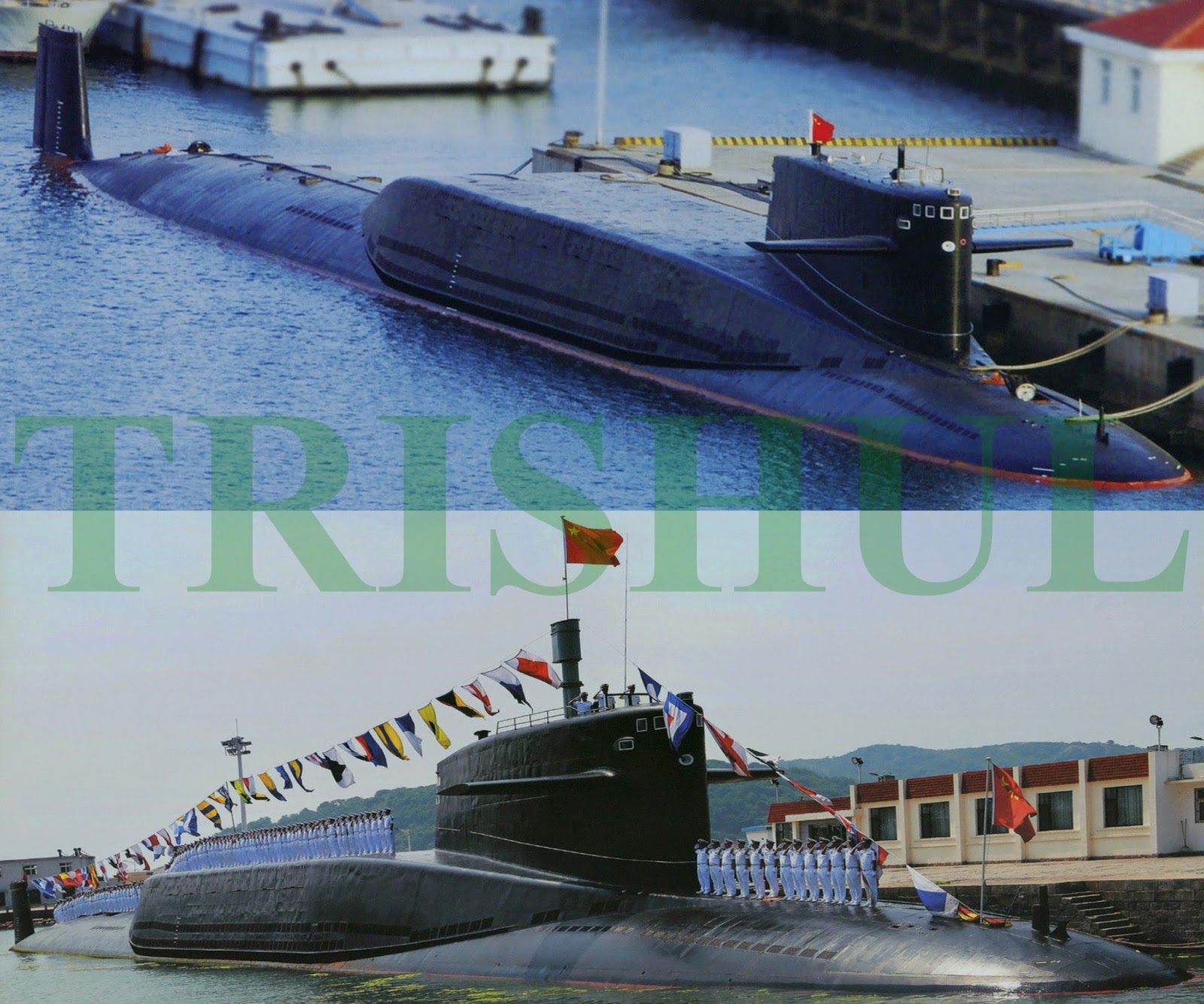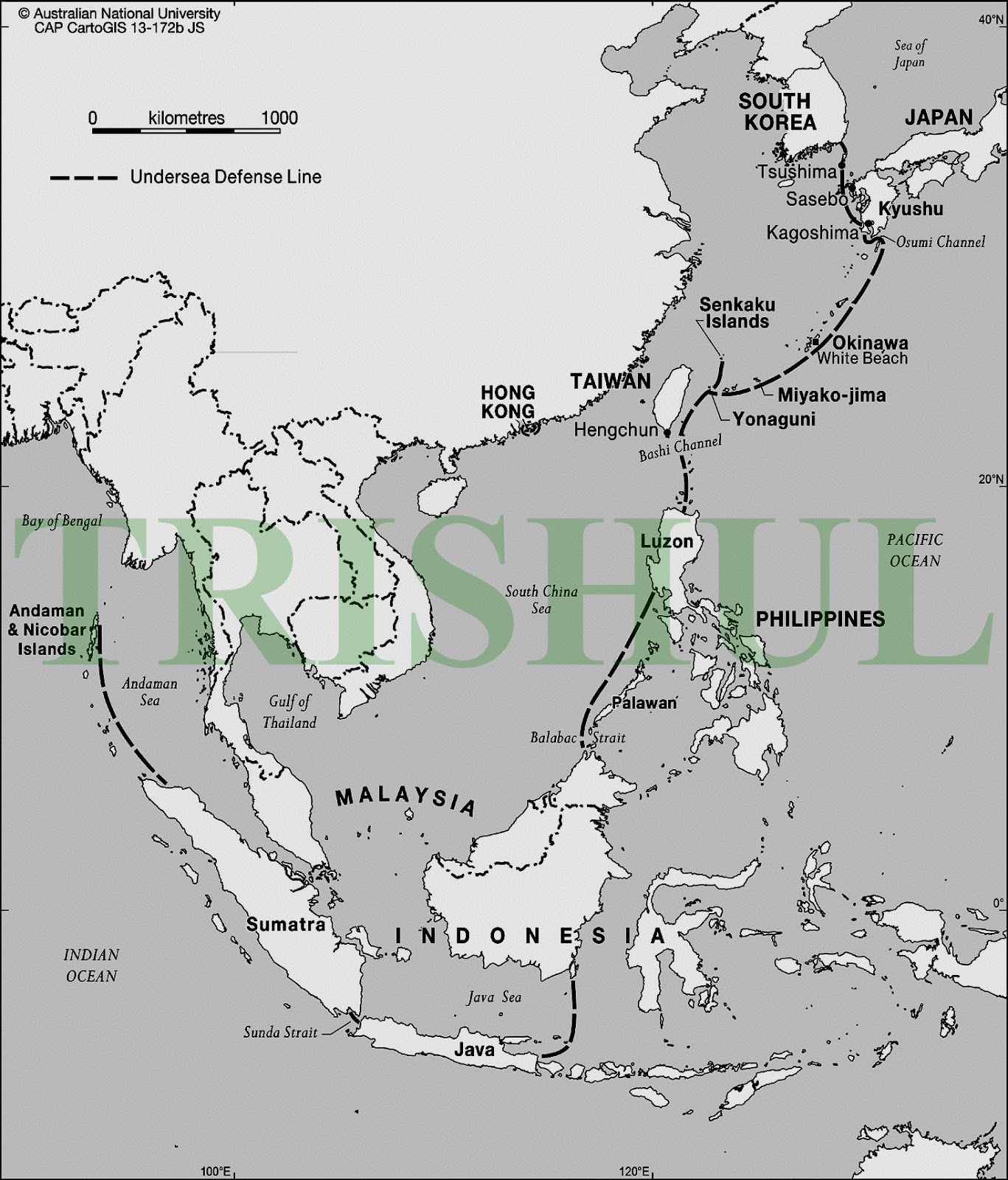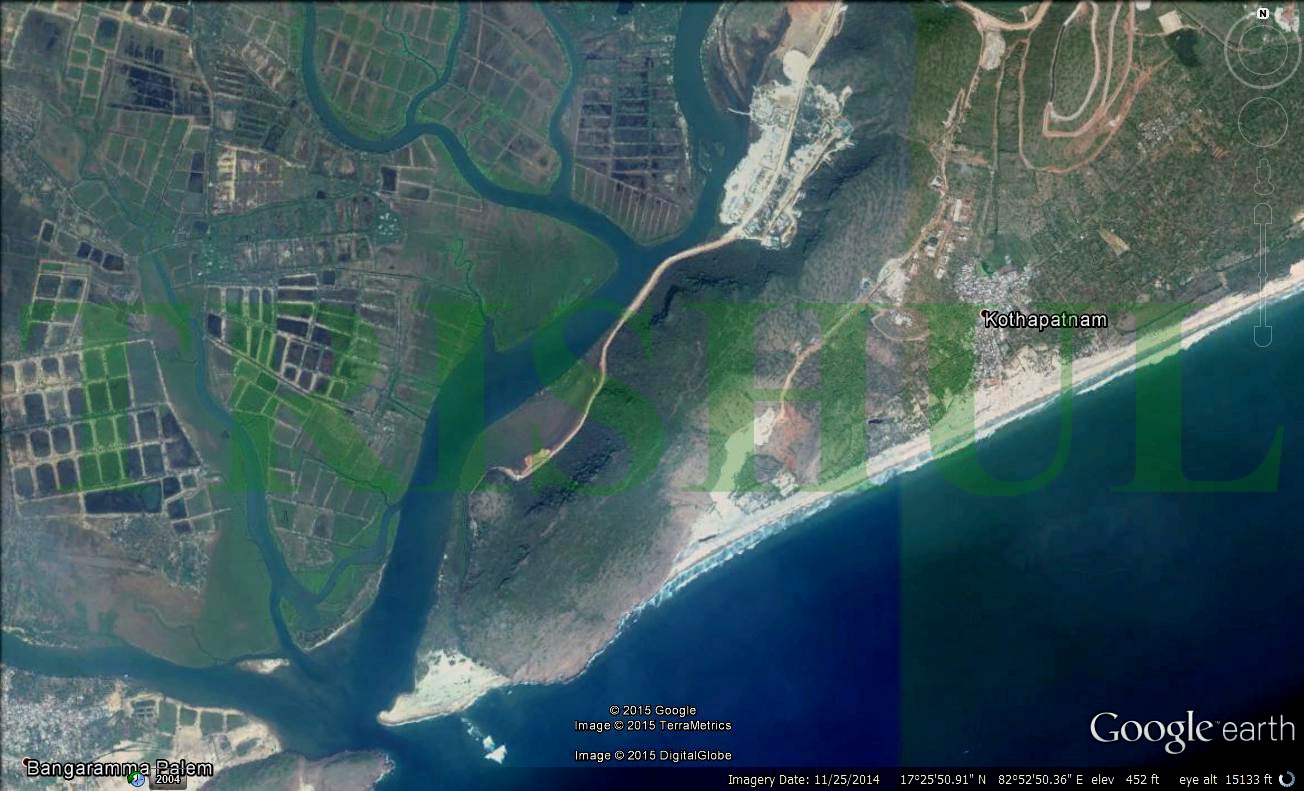US DoD Press Conference on 29-8-2016
Listen to what he says from 17.10 till 22.27 about the maritime awareness domain & the Andaman Sea, when no one even asked him about that sea. This can be reasonably inferred that he certainly had in mind what PSK had originally written about the 'Fish Hook' seabed surveillance network & he took special care to mention the term 'Andaman Sea'
Growing Tentacles
The PLAN presently has an estimated 60 double-hulled submarines, of which 51 are diesel-electric SSKs (two Type 877EKM, ten Type 636, 13 Type 039 Song-class, four S-20/Type 041A Yuan-class, four S-20/Type 041B Yuan-class and 18 Type 035 Ming-class) and eight (four Type 091 Han-class and four Type 093 Shang-class) are nuclear-powered SSNs. In addition, there’s one Type 092 Xia-class and two Type 094 Jin-class SSBNs, with five more of the latter due for delivery in future. Also due for procurement in future are 15 single-hulled SSKs (most likely Russia’s Amur 1650-class) powered by indigenously-developed Stirling Engine air-independent propulsion systems. The number of PLAN submarine sorties has approximately quadrupled over the last seven years, with an average of 12 patrols being conducted each year between 2008 and 2015, following on from six in 2007, two 2006 none in 2005. In the Indian Ocean region (IOR), the PLAN has so far carried out three submarine patrols (all accompanied by Type 925/Type 926 submarine tenders), with the submarines being kept its vessels out at sea for 95 days during each patrol.

The PLAN’s first SSN patrol within the IOR lasted from December 3, 2013 till February 12, 2014. One Type 093 Shang-class boat left Longpo its bastion at Yulin on December 3. Ten days later, on December 13, the SSN reached the Gulf of Aden via the Ombai Wetar Strait near Indonesia. It remained on patrol in the area for nearly two months. Next to follow was the Type 039 Song-class SSK ‘Great Wall 0329’, which later docked at the China-funded Colombo International Container Terminal in Sri Lanka from September 7 to 14, 2014 along with the Type 925-class tender
861 Changxingdao. This was followed by a patrol of a Type 091 SSN from December 13, 2014 to February 14, 2015. Next came a S-20/Type 041A Yuan-class SSK that docked at Pakistan’s Karachi port in late May 2015, and was accompanied by a Type 925 Dajiang-class submarine tender. From this, it can be deduced that in the years to come, the PLAN will continue with this practice of launching at the very least two annual long-distance patrols—one each by an SSN and SSK—into the IOR. Entry while remaining submerged into the IOR from either the South China Sea or the Pacific Ocean will be made through either the Lombok Strait or the Ombai Wetar Straits astride Indonesia.

During future hostilities with either the US or India, the most likely destinations of PLAN’s SSNs within the IOR will be the area around Diego Garcia and the Chagos Trench. Diego Garcia is part of the Chagos Archipelago, situated on the southernmost part of the Chagos-Laccadive Ridge. To the east lies the Chagos Trench, a 400 mile-long underwater canyon that ranges in depth from less than 1,000 metres to more than 5,000 metres, and the most likely area where the IN’s SSBNs will be lurking during operational patrols.

All vessels, including warships, enjoy the right of innocent passage through archipelagic waters. Innocent passage requires a vessel to conduct continuous and expeditious transit in a manner that is not prejudicial to the peace, good order or security of the archipelagic state. For a submarine, innocent passage means transiting on the surface, as is the case with the Malacca Strait. But the Lombok Strait astride Indonesia is not considered archipelagic waters, rather it is part of an Archipelagic Sea Lane (ASL) that carves a path from Lombok in southwest Indian Ocean, through the Flores Sea, the Makassar Strait, the Sulawesi and Celebes Seas and on to the Pacific Ocean. It is like this because Indonesia desires sovereignty within the archipelago beyond the normal 12nm territorial water limit, which can be granted in relation to archipelagic states in certain circumstances, provided the ASLs are designated. For a submarine, normal passage means transiting submerged. The other interesting thing about ASLs is that, unlike innocent passage through archipelagic waters, which can be suspended temporarily on a non-discriminatory basis, this is not the case for ASLs. Any PLAN submarine can legally transit Lombok dived. If it chooses to loiter illegally and then gets caught, it can feign normal passage.

Unlike the Sunda Strait—which forms part of a separate ASL, but is realistically too shallow for dived passage by all but the most daring/lucky of submarine operators—the Lombok Strait is relatively deep (varying between 800 and 1,000 metres). At the southern end of the Strait, where the channel is divided by the Island of Nusa Penida, a shallow sill is located. Depths rise to between 200 and 250 metres in the channel to the east of Nusa Penida. The sill is of huge importance to the oceanographic behaviour in the Strait, particularly since the Lombok Sea serves as one of two outlets (the other being the Timor Passage) for a great body of warm water that flows from the Pacific to the Indian Ocean—the so called Indonesian Throughflow. This sill, coupled with the Throughflow and tidal flow, results in relatively large current flows, typically from north to south, but is sometimes reversed. Current flows near the sill can reach 3.5 metres per second during spring tide periods. In the deeper water to the north of the sill it slows to between 0.2 to 0.5 metres. It must be noted, however, that current velocities vary as a function of depth. The upper 100 metres carry 50% of the total water transport through the Lombok Strait. Current velocities are, therefore, maximum at the surface with a sharp decrease from 75 to 300 metres. These currents are a quite significant for submarine operations, particularly diesel-electric SSKs, which must conserve battery life or that cannot take advantage of the deeper areas where the current is minimal. They also create interesting and complicated acoustic conditions for sonar on account of the varying temperature and salinity gradients across the current-related layers.
China’s Undersea Trip-Wire
The PLAN’s seabed-based surveillance network, developed jointly by Ukraine and China since 1996, has been under installation along China's territorial waters since 2012, with work expected to be completed later this year. The seabed-based component of this network comprises arrays of hydrophones and magnetic anomaly detectors spaced along undersea cables laid at the axis of deep sound-channels roughly normal to the direction that the arrays are to listen. This capability is next paired with maritime reconnaissance/ASW aircraft assets to establish a multi-tier ASW network. The first naval bases to be covered by this network were the PLAN’s submarine bases in four sites: the Bohai shipyard at Huludao on the Bohai Sea where all nuclear-powered submarines are built; the North Sea Fleet’s Xiaopingdao naval refit base near Dalian where the SSBNs are fitted out for SLBM test-firings from the Bohai Sea across China into Delingha in the Qinghai desert and the desert of Lop Nor in Xinjiang; the North Sea Fleet’s base at Jianggezhuang (Laoshan) approximately 18km east of Qingdao in Shandong Province; and the South Sea Fleet’s bases at Longpo and Yulin at Yalong Bay near Sanya on the southern tip of Hainan Island.

As far back as 2001, a researcher at the PLAN’s Institute 715 had published a survey of ocean surveillance technologies that included a detailed discussion of the US SOSUS programme. Later, one of the most detailed discussions of China’s seabed-based surveillance networks appeared in the journal
Shandong Science in 2010. However, Shandong was apparently not the only coastal area pushing forward with R & D on seabed-based sensors. Further down south and located near Shanghai at the mouth of large Hangzhou Bay, an ‘East Sea Ocean Floor Observation Test Station’, also known as the Xiaoqushan Station, was discussed extensively by Chinese researchers in an article appearing in
Science Bulletin in 2011. Focussing on the collection of a variety of oceanographic information—tidal and current data, for example—experimentation with sonars is presently ongoing at this station with a wireless data-collection system that was commissioned into service in April 2009. Another analysis by several PLAN researchers in late 2012 discussed this station and military applications for its seabed-based sensors, alongside civilian uses, including environmental protection, navigation, and disaster prevention. The analysis compared different configurations for seabed-based sensor networks, including linear, circular, and tree-type designs, and also evaluating their respective cost, security and reliability implications. It also mentioned the Xiaoqushan Station as the basis for a larger ‘East Sea Ocean Floor Sensor Network’ that will be completed by 2016. The analysis also mentioned undersea mobile sensor stations, as well as fixed seabed sensors.
In early 2013,
China Science Daily’s March 26 edition opted to go public with the system by publishing a feature with the banner headline: “
Here They Are Quietly Listening to the Ocean: The Whole Story of the Building of Our Country’s First Deep Sea Ocean Floor Sensor Network Base”. According to this article, R & D efforts had commenced in 1996 and an initial prototype of the seabed-based sensor system was tested back in 2005 in the waters surrounding the PLAN’s base at Qingdao in Shandong Province. An additional site was selected for the Longpo naval base, and work formally commenced there in April 2009. Initial set-up was completed in 2010. The undersea-sensor system has since been integrated with a larger surveillance network that also has airborne and space-based components. Two articles appearing in mid-2013 in the technical journal
Ship Electronic Engineering, confirmed that this network was now at an active deployment stage. One article discussed the technical challenge of energy supply by proposing a low-power ‘sleep-wake mode’, and mentioned the interesting additional problem that a country’s undersea sensors are subject to being captured by an adversary. Another article discussed the importance of advances in ‘burst communications’ for enhancing the military value of the seabed-based sensor network. A mid-2012 analysis in the naval magazine
Modern Ships unequivocally confirmed the existence of PLAN’s network of seabed-based sensors. The cover-story of a second quasi-official naval journal,
Naval & Merchant Ships from mid-2013, similarly showed an acute PLAN sensitivity to its perceived vulnerability to Western and Japanese submarines. The central concern shown there was protecting the PLAN’s SSBNs, while the main threat vector mentioned was the USN.

Moreover, it put forward a plausible theory of limited war in the nuclear age: “Limited war theory does not permit the enemy country to become a target. But to win the war one must defeat the enemy’s military forces so that the SSBN can become the ideal target.” The article asserted that the range of PLAN’s SLBMs (the JL-2 SLBM on the Type 094 Jin-class SSBN has a range of 7,400km) must be extended “so that one-way passage to the patrol area is shortened to 5-10 days.” At present, all PLAN-operated submarines are evaluated to be highly vulnerable to detection from “US warships employing active sonar as well as US Navy SSNs lurking near Chinese harbours.” To address this dire situation, the seabed-based surveillance system is deemed critical: “Among the various ASW elements, the seabed-based surveillance system is the foundation and heart, offering advanced warning for the sortie of ASW aircraft and light warship escorts.” The article continued: “The hardest part of ASW is early detection. If China can only find the targets, PLAN’s ASW forces can then apply pressure against the activities of US submarines, limiting their intelligence and attack capabilities.” While this article discusses other critical ASW elements—even highlighting the role of aircraft carriers, for example—a clear focus and conclusion of this analysis is the priority to deploy seabed-based surveillance systems. It envisioned a sequential process: “In order for China to build a relatively tight ASW network, we must first [outside of all major fleet bases] construct fixed seabed sonar arrays for continuous surveillance and control of sea areas close to ports.” The analysis further advocates that after building a network proximate to its naval bases, the PLAN should deploy seabed-based sonar arrays to the west of Okinawa, to the east of Taiwan, and into the Luzon Strait.” Nor should China’s ambitions for undersea surveillance be restricted to the “near seas,” according to this analysis, as it suggested that more distant areas, such as the Bay of Bengal, may be appropriate sites for future Chinese seabed-based sonar arrays “in order to support ASW operations in those sea areas.”
Credit: Zebra













